Speaker
Description
Experiments like the ATLAS detector at the HL-LHC or detectors at future hadron colliders need muon detectors with excellent momentum resolution at the percent level up to the TeV scale both at the trigger and the offline reconstruction level. This requires muon tracking chambers with high spatial resolution even at the highest background fluxes. Drift-tube chambers are the most cost effective technology for the instrumentation of large-area muon systems providing the required high rate capability and three-dimensional spatial resolution. Thanks to the advances in analog and digital electronics, modern drift-tube chambers can be used in stand-alone mode up to the highest background rates providing event times and second coordinates without the necessity of additonal trigger chambers. New key developments in the integrated front-end electronics are active baseline restoration of the shaped signal and picosecond time-to-digital converters for second coordinate measurement with double-sided readout of the tubes. Self-triggered operation has become possible using modern high-performance FPGAs allowing for real-time pattern recognition and track reconstruction.
